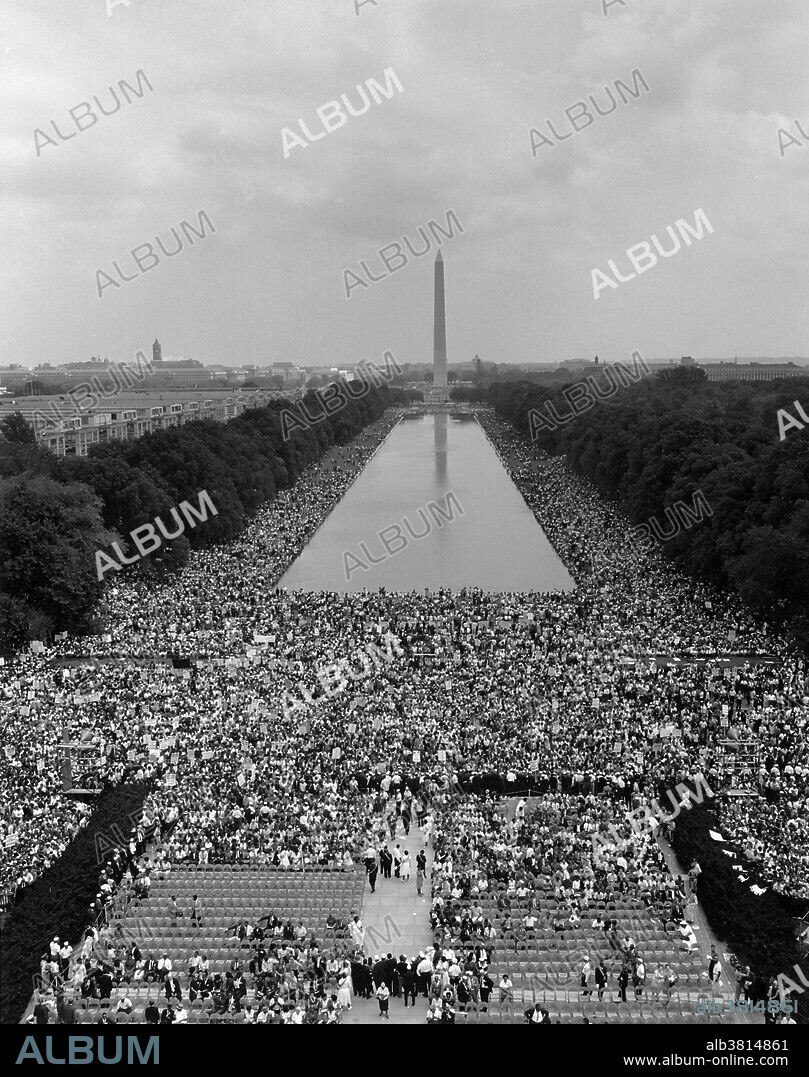alb3814861
March on Washington for Jobs and Freedom, 1963

|
Ajouter à une autre Lightbox |
|
Ajouter à une autre Lightbox |



Avez-vous déjà un compte? S'identifier
Vous n'avez pas de compte ? S'inscrire
Acheter cette image
Titre:
March on Washington for Jobs and Freedom, 1963
Légende:
Voir la traduction automatique
Entitled: "Aerial view of the crowd assembling with a good view of the Reflecting Pool and the Washington Monument." The March on Washington for Jobs and Freedom was one of the largest political rallies for human rights in United States history and called for civil and economic rights for African-Americans. On Wednesday, August 28, 1963. Martin Luther King, Jr., standing in front of the Lincoln Memorial, delivered his historic "I Have a Dream" speech in which he called for an end to racism. The march was organized by a group of civil rights, labor, and religious organizations, under the theme "jobs, and freedom". Estimates of the number of participants varied from 200,000 to 300,000; it is widely accepted that approximately 250,000 people participated in the march. Observers estimated that 75-80% of the marchers were black. The march is credited with helping to pass the Civil Rights Act (1964) and preceded the Selma Voting Rights Movement which led to the passage of the Voting Rights Act (1965).
Crédit:
Album / NARA/Science Source
Autorisations:
Modèle: Non - Propriété: Non
Questions sur les droits?
Questions sur les droits?
Taille de l'image:
1548 x 1959 px | 8.7 MB
Taille d'impression:
13.1 x 16.6 cm | 5.2 x 6.5 in (300 dpi)
Mots clés:
AÉRIEN • AMÉRICAIN • BASSIN • CÉLÈBRE • CELEBRITE • DEPOT • DROITS DE L'HOMME • ÉVÉNEMENT • MANIFESTATION POLITIQUE • MARCHE SUR WASHINGTON • NEGRE • NOIR (HOMME) • NOIRS (PERSONNES) • OBELISQUE • PILE (TAS) • RESERVE • RÉSERVOIR • STOCK • WASHINGTON DC • XXE SIECLE
 Pinterest
Pinterest Twitter
Twitter Facebook
Facebook Copier le lien
Copier le lien Email
Email
